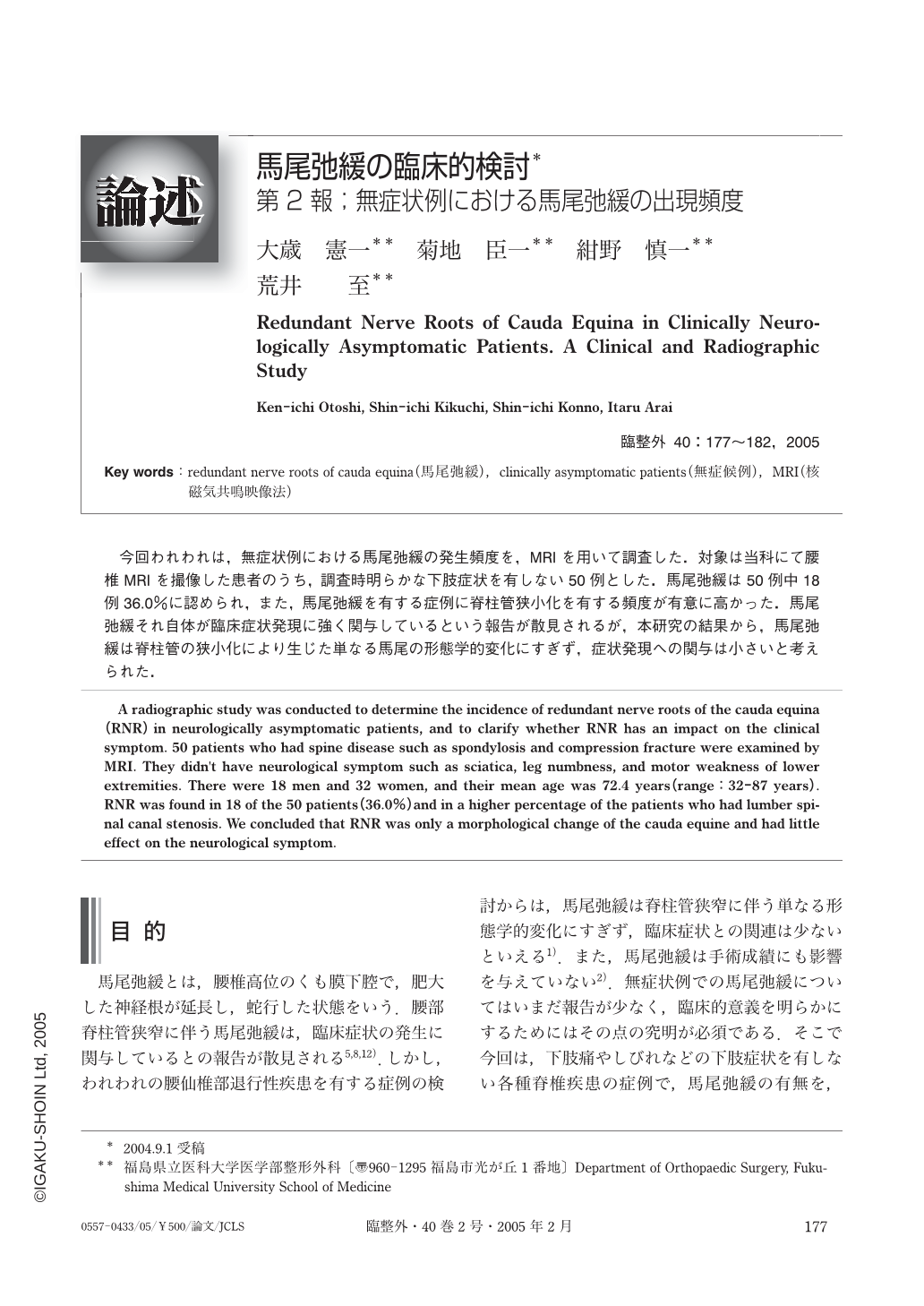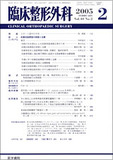Japanese
English
- 有料閲覧
- Abstract 文献概要
- 1ページ目 Look Inside
今回われわれは,無症状例における馬尾弛緩の発生頻度を,MRIを用いて調査した.対象は当科にて腰椎MRIを撮像した患者のうち,調査時明らかな下肢症状を有しない50例とした.馬尾弛緩は50例中18例36.0%に認められ,また,馬尾弛緩を有する症例に脊柱管狭小化を有する頻度が有意に高かった.馬尾弛緩それ自体が臨床症状発現に強く関与しているという報告が散見されるが,本研究の結果から,馬尾弛緩は脊柱管の狭小化により生じた単なる馬尾の形態学的変化にすぎず,症状発現への関与は小さいと考えられた.
A radiographic study was conducted to determine the incidence of redundant nerve roots of the cauda equina (RNR) in neurologically asymptomatic patients, and to clarify whether RNR has an impact on the clinical symptom. 50 patients who had spine disease such as spondylosis and compression fracture were examined by MRI. They didn't have neurological symptom such as sciatica, leg numbness, and motor weakness of lower extremities. There were 18men and 32 women, and their mean age was 72.4 years (range:32-87 years). RNR was found in 18 of the 50 patients (36.0%) and in a higher percentage of the patients who had lumber spinal canal stenosis. We concluded that RNR was only a morphological change of the cauda equine and had little effect on the neurological symptom.

Copyright © 2005, Igaku-Shoin Ltd. All rights reserved.


